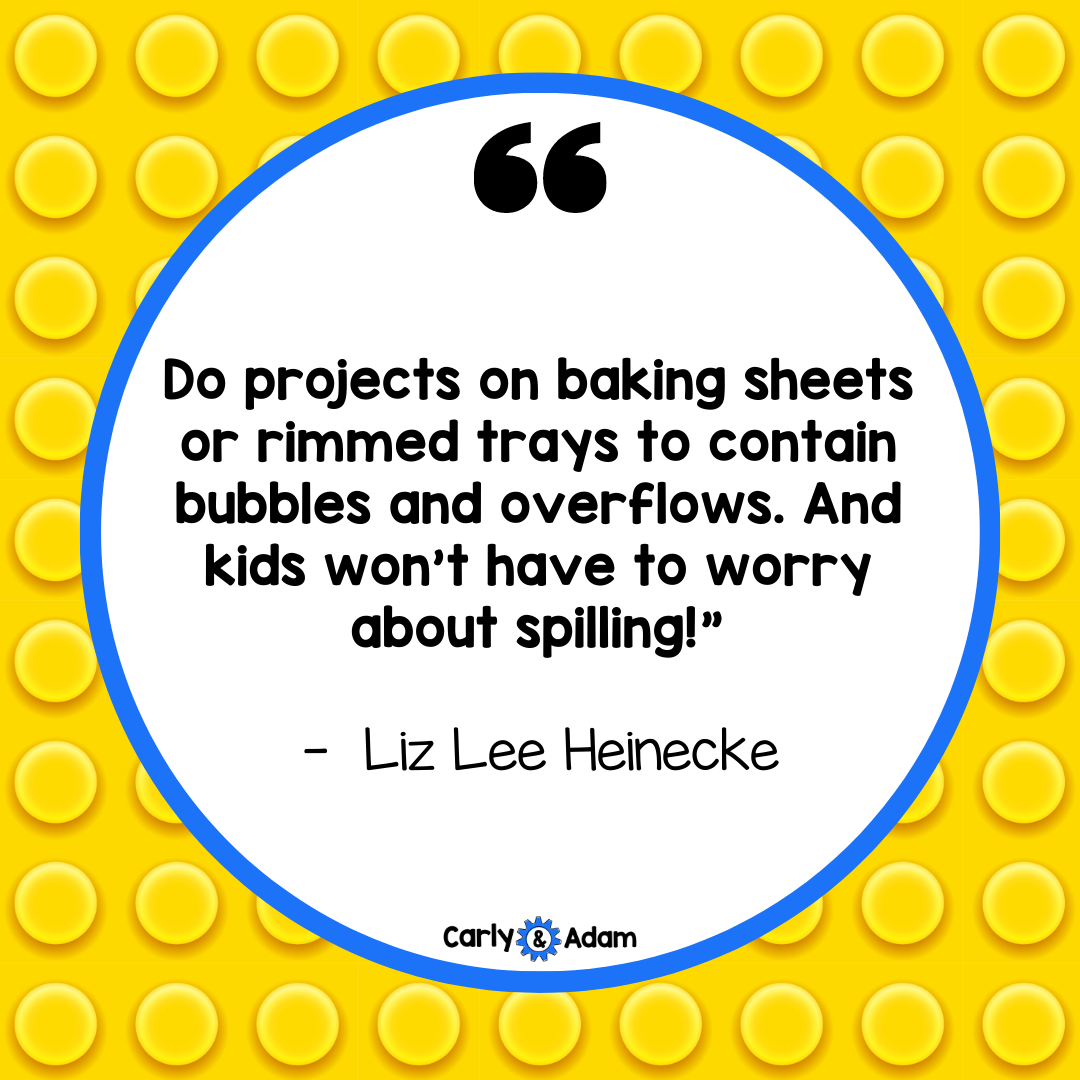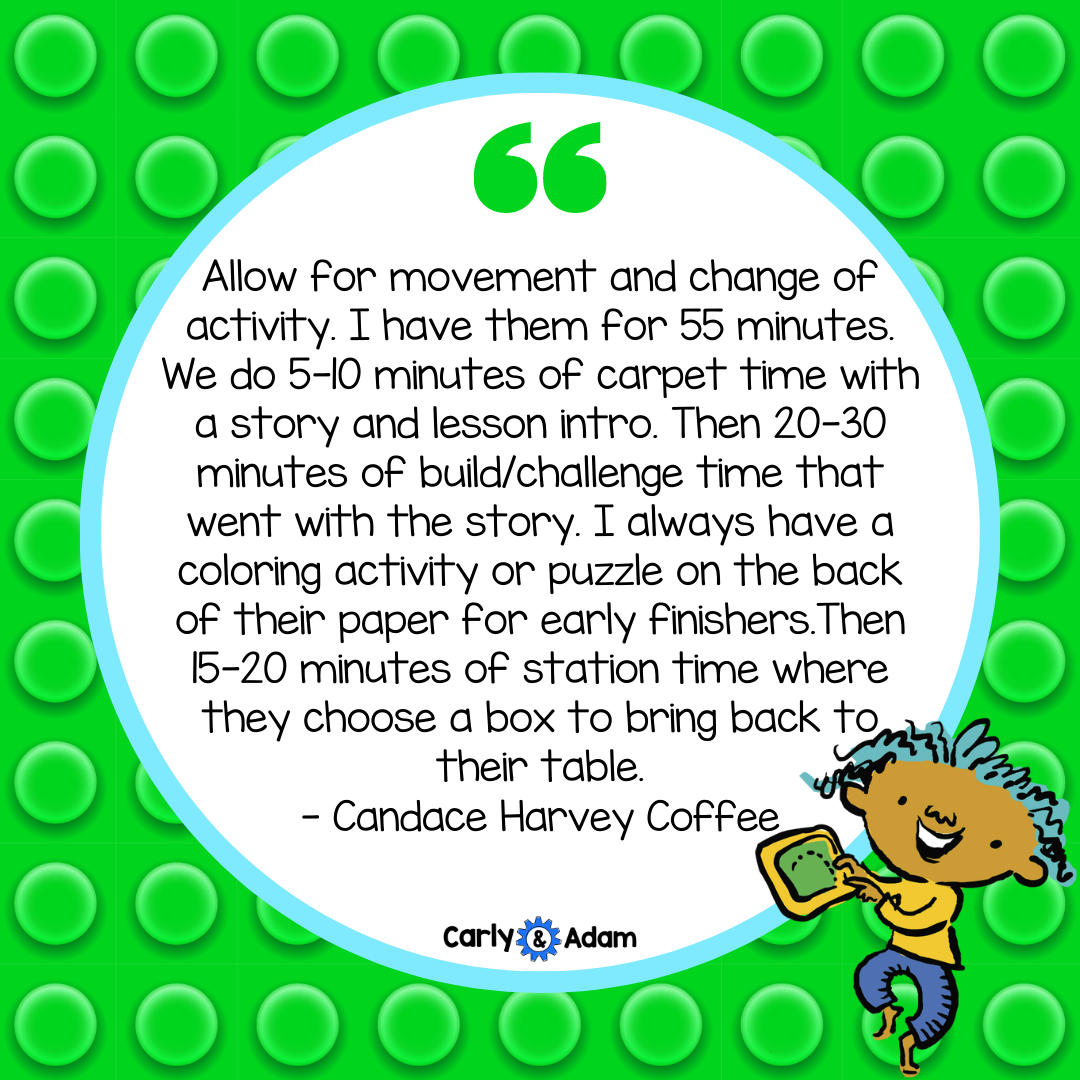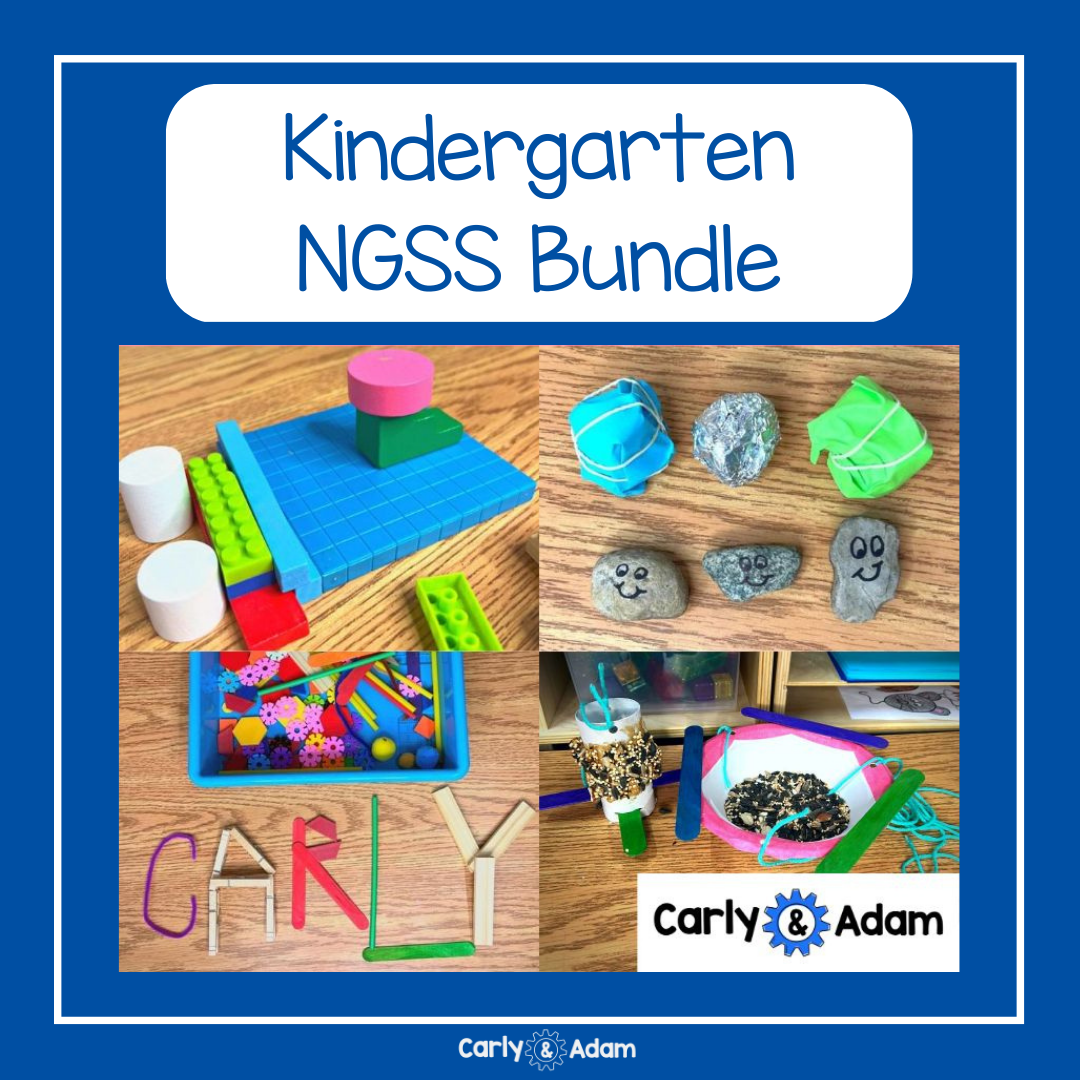6 Tips for Teaching Kindergarten STEM
The following is a guest post from Dr. Jacie Maslyk.
Teaching STEM with kindergarten students doesn’t have to be challenging. Young learners love hands-on exploration and get excited when they get to tinker with new things.
6 Tips for teaching STEM in the kindergarten classroom.
Be prepared
Explore curiosities
Incorporate breaks
Share books
Find resources
Never underestimate
Setting up our classrooms for STEM learning and preparing engaging materials for our students is important at all grade levels, but especially in kindergarten. We also need to create a balance between exploring student curiosities and providing them with breaks to increase their engagement and attention.
We can do this by selecting great books and other interesting resources for students. Most importantly, we must hold the belief that our kindergarteners are capable and creative STEM learners.
Be Prepared
Organizing your materials in advance and having everything ready for your kindergarten students is critical. You can’t afford to be looking for books, manipulatives, or papers at the last minute. Make sure you’ve decided on the STEM materials that students will use. Set aside everything that will be needed, count out items, and have them accessible to your learners.
One of our STEM Teachers Club Members, Rachel Dietz Hillenbrand shared this simple, (yet brilliant!) suggestion for prepping materials ahead of time, “I use cheap chip and dip dishes to keep all supplies separated and one for each group/table.” Using bins, baskets, or trays can be helpful when preparing and organizing materials. They also help to reduce the mess when students are working. Liz Lee Heinecke (@KitchPantrySci on Twitter) also suggests “Do projects on baking sheets or rimmed trays to contain bubbles and overflows. And kids won’t have to worry about spilling!”
2. Explore Curiosities
In kindergarten, students are excited and curious about the things around them. It is important that our STEM classrooms provide time and space for learners to explore curiosities. @DrJoScience on Twitter simply states, “Nurture and provide opportunity for curiosity.” Melanie Thompson suggested in our membership Facebook group letting students play and experience the materials before you try to do a planned activity. “They will want to do this anyway and planning for it will save you some frustration!”
When we posted this question on Twitter, we had a lot of great responses from the STEM community. @nikkistrecker on Twitter shared “with our Ks we do a lot of exploration around pushes and pulls. We make paper airplanes, straw rockets, kites, and musical instruments. We always prototyped, tested, and reflected on what we might change.” These concepts are perfect for curious kindergarten students. @JenOliger agrees, “they need time to play and explore different types of materials.”
3. Incorporate Breaks
Many kindergarten students can only maintain attention for a limited amount of time. We need to structure our STEM lessons in a way that supports the active nature of our learners. Intentionally incorporating breaks, movement, and a variety of learning experiences will help our kindergarten students. STEM Teacher’s Club member Candace Harvey Coffee shares her lesson structure for littles.
Another member Donna Ratchford shares, “I only have kindergarten for 30 minutes weekly. I noticed that at that age, stations work best. They are still learning to work with partners so I prefer to do mostly individual activities and allow parallel play. I make partners an option but don’t force it. I also model and discuss ways to work together and solve disagreements.” Using stations provides a great structure for kindergarteners in the STEM space but also builds communication and collaboration skills.
4. Share Books
We love a good read aloud, especially if it is connected to a STEM concept or an opportunity for kids to be creative. At the kindergarten level, books are a great way to engage young learners in interesting texts that lead to engineering and design experiences.
Dr. Jennifer Byrd Redfearn (@JenniferRedfea4 on Twitter) agrees, “Infuse a lot of literacy!” As we develop early literacy skills through reading aloud, we can also introduce different concepts in science and engineering to our students.
Candace Harvey Coffee adds, “We also do a lot of fairytale STEM at that age and stick with one fairy tale for 3-4 weeks.” Selecting a variety of children’s books from picture books to traditional fairy tales to informational texts, incorporating literacy can happen in classrooms or online.
Sherry LeGrand (@SLegrand11 on Twitter) shares:
I teach K-8 STEAM online and have found problem solving for characters in stories, (stop reading the story where the problem is introduced), to be engaging for them. We ideate together and they draw and label their solution. Then we keep reading to see what the character decided.
School librarian Mindy Smith also likes to let students draw out plans and create something connected to the books they read. “I have them use plans to build, using different materials. Some favorite materials I use are creative flakes, Play-Doh, and blocks.” By combining engaging strategies with interesting books, students can learn about STEM/STEAM concepts then apply them within a hands-on learning experience.
5. Find Resources
Look no further for grade-specific, NGSS standards-aligned lessons! We have a full year or kindergarten STEM curriculum that covers every kindergarten Next Generation Science Standard. You can take a look here or join the membership and get access to all of our materials.
When we asked the STEM community about other great resources, they highlighted these free resources. Explorify School offers free resources for teaching primary science. Another helpful resource suggested by our educational community is Schoolyard Films. This free resource provides educational videos connected to interesting content for kids. They also include study guides and lessons for teachers.
If you enjoy the connection between STEM and literacy, you may also want to check out Novel Engineering through Tufts University. You can also grab a copy of Remaking Literacy: Innovative Instructional Strategies for Maker Learning which offers endless lesson ideas connected to your favorite children’s literature selections.
6. Never Underestimate
The naysayers will tell you . . . Oh, kindergarten students are too young to use those materials. Students won’t know how to do that. They’ll be too frustrated. They don’t listen in class. What makes you think they will be able to follow those directions?
We know that ALL students can engage in meaningful STEM learning. Yes, even in kindergarten! Digital Integration Facilitator, Kim Collazo offers her best advice:
Diane Trout echoes this sentiment. “Believe in them! Let them make mistakes and learn from them! Don’t underestimate them.” When things challenge us (and our students) in the classroom, it is easy to set it aside and do something else--maybe something easier. Our students will rise to the challenge and persevere when things get hard, as long as we have given them the skills and strategies to do so.
Another member Carrie Keenan shared, “Don’t give them a finished product to look at. This will make them want to just copy it, and I promise you they’ll come up with something much more creative and unique. And yes no matter what people say 5 year olds can do it!
For more STEM ideas, inspiration, and collaboration with other STEM teachers be sure to join our FREE Facebook group Elementary STEM Teachers with Carly and Adam!
We hope you have found this blog post helpful. To stay connected with Carly and Adam's teaching tips and classroom freebies be sure to follow us on Facebook, Pinterest, Teachers Pay Teachers, and subscribe to our blog!
An educator for the last 23 years, Dr. Jacie Maslyk, has served as a classroom teacher, reading specialist, elementary principal, and assistant superintendent. She is the author of STEAM Makers: Fostering Creativity and Innovation in the Elementary Classroom, Connect to Lead: Power Up Your Learning Network to Move Your School Forward (ISTE), Remaking Literacy: Innovative Instructional Strategies for Maker Learning and Unlock Creativity: Opening a World of Imagination With Your Students. You can read more on her blog, Creativity in the Making, at www.jaciemaslyk.blogspot.com. Connect with Jacie on Twitter @DrJacieMaslyk or email her at jaciemaslyk@gmail.com .








